How to permanently disable Microsoft Defender Antivirus on Windows 10
Yes, you can disable Microsoft Defender Antivirus on Windows 10, and here's how.
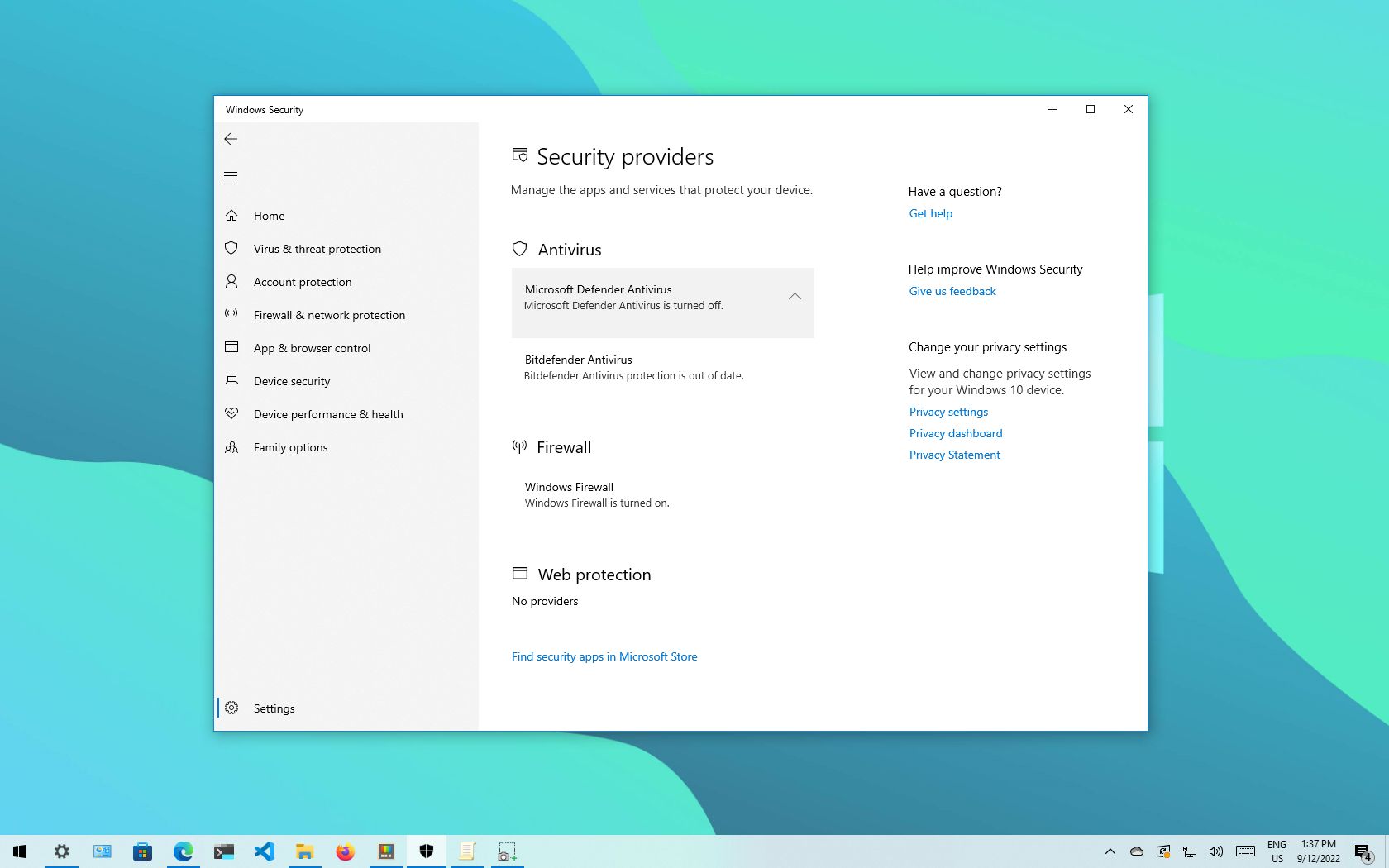
On Windows 10, Microsoft Defender Antivirus is the anti-malware solution that protects your computer and files from unwanted viruses, ransomware, spyware, and other malware and hackers. While it is considered one of the best computer antivirus software options, you may still find situations where you may want to disable it permanently.
For example, if you don't like the security app for personal reasons, if you have to change system settings conflicting with the antivirus, or if you have to set up a computer that won't connect to the network and security is not a concern. Or if you are a network administrator and must comply with the organization's policies on some specific computers.
Although Windows 10 does not include an option to uninstall Microsoft Defender Antivirus, it is possible to permanently disable the app using Group Policy or install a third-party solution. Or you can also disable the antivirus temporarily using the Windows Security app.
This guide will walk you through the different methods to permanently disable Microsoft Defender Antivirus (or temporarily) on Windows 10.
How to disable Microsoft Defender Antivirus using Windows Security
If the antivirus conflicts with another application or installation, you don't have to disable the Microsoft Defender Antivirus permanently. You only need to turn off the feature temporarily.
To temporarily disable the real-time antivirus protection on Windows 10, use these steps:
- Open Start.
- Search for Windows Security and click the top result to open the app.
- Click on Virus & threat protection.
- Under the "Virus & threat protection settings" section, click the Manage settings option.
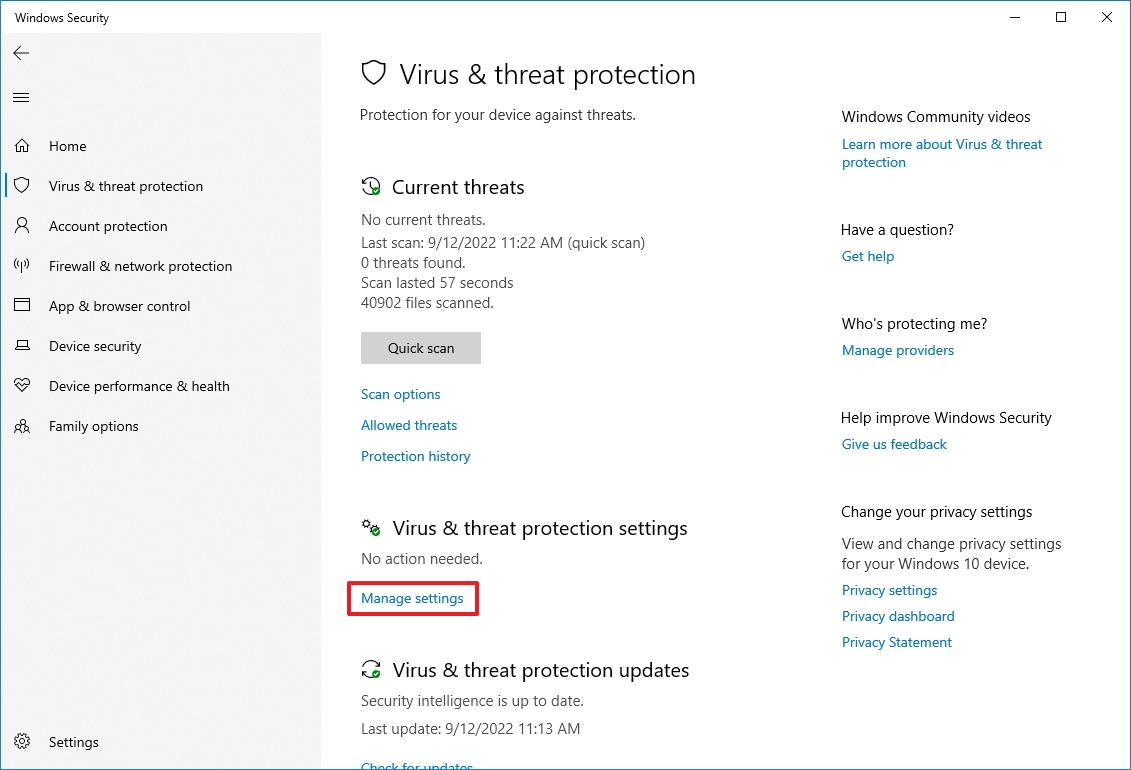
- Turn off the Real-time protection toggle switch to disable Microsoft Defender Antivirus temporarily.
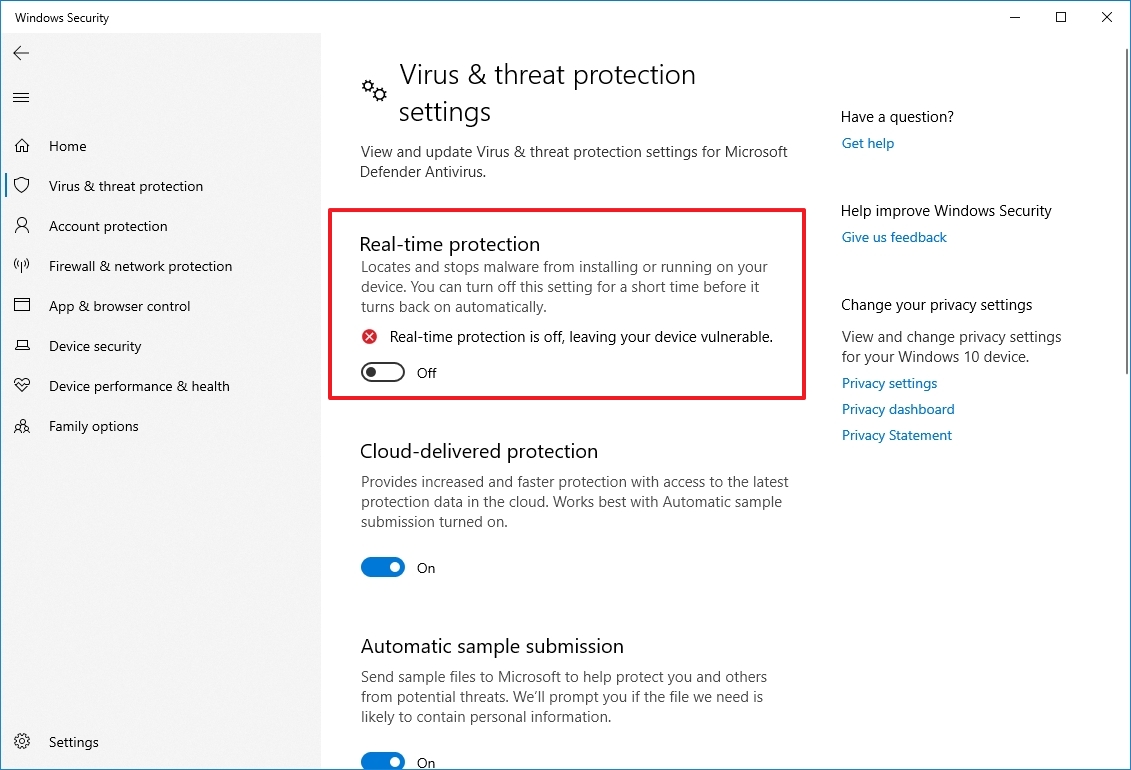
Once you complete the steps, the antivirus will temporarily disable its protection to install apps or make specific system changes without unwanted conflicts.
Get the Windows Central Newsletter
All the latest news, reviews, and guides for Windows and Xbox diehards.
After restarting the computer, the antivirus will enable again automatically. Or you can use the same instructions outlined above, but in step 5, make sure to turn on the Real-time protection toggle switch.
This is not a permanent solution, but it's the best option to disable the protection to make system changes or install programs that are causing conflicts.
How to disable Microsoft Defender Antivirus using Group Policy
If you want to disable Microsoft Defender Antivirus permanently, you can use the Group Policy Editor. The only caveat is that you must also disable the "Tamper Protection" feature before the policy can apply.
On Windows 10, Tamper protection is a feature that protects Windows Security against unwanted changes from outside the app. Since the Local Group Policy Editor modifies the security settings from outside the app, the antivirus will restore any changes you have made during the next restart.
Disable Tamper Protection
To disable Tamper Protection, use these steps:
- Open Start.
- Search for Windows Security and click the top result to open the app.
- Click on Virus & threat protection.
- Under the "Virus & threat protection settings" section, click the Manage settings option.

- Turn off the Tamper Protection toggle switch.
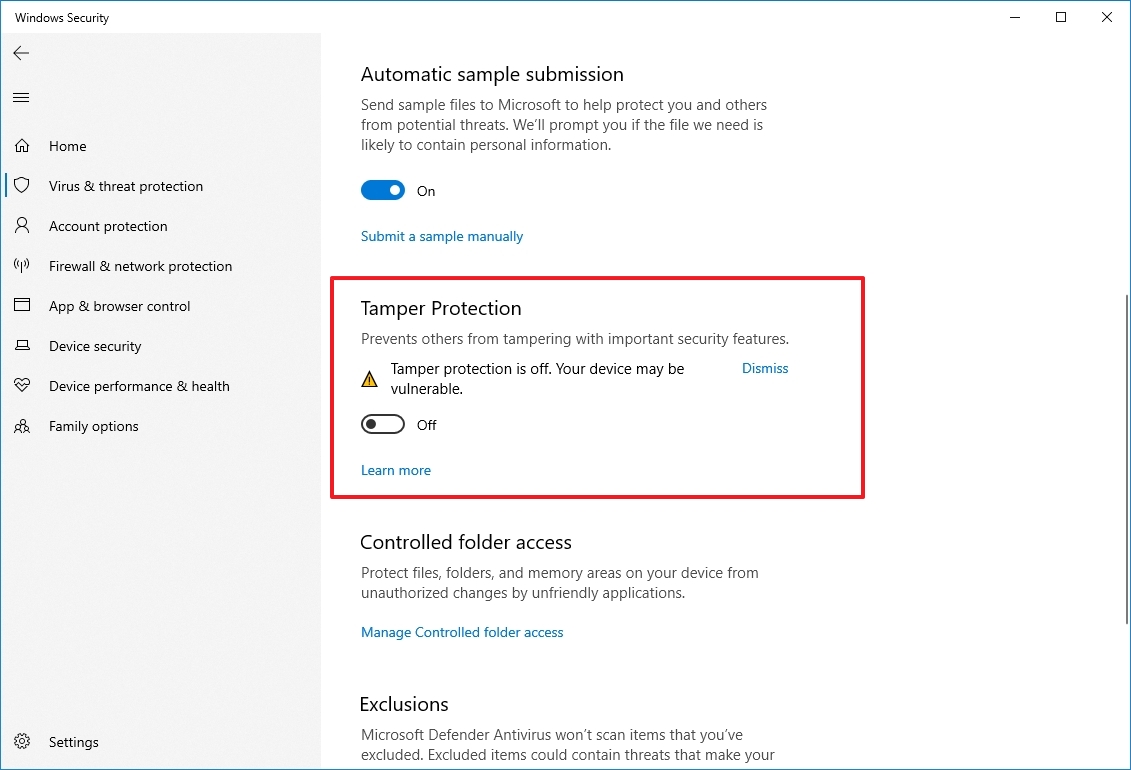
After you complete the steps, continue with the instructions to disable default Windows 10 antivirus using Group Policy.
Disable Microsoft Defender Antivirus
To disable Microsoft Defender Antivirus permanently on Windows 10, use these steps:
- Open Start.
- Search for gpedit.msc and click the top result to open the Local Group Policy Editor.
- Browse the following path: Computer Configuration > Administrative Templates > Windows Components > Microsoft Defender Antivirus
- Double-click the "Turn off Microsoft Defender Antivirus" policy.
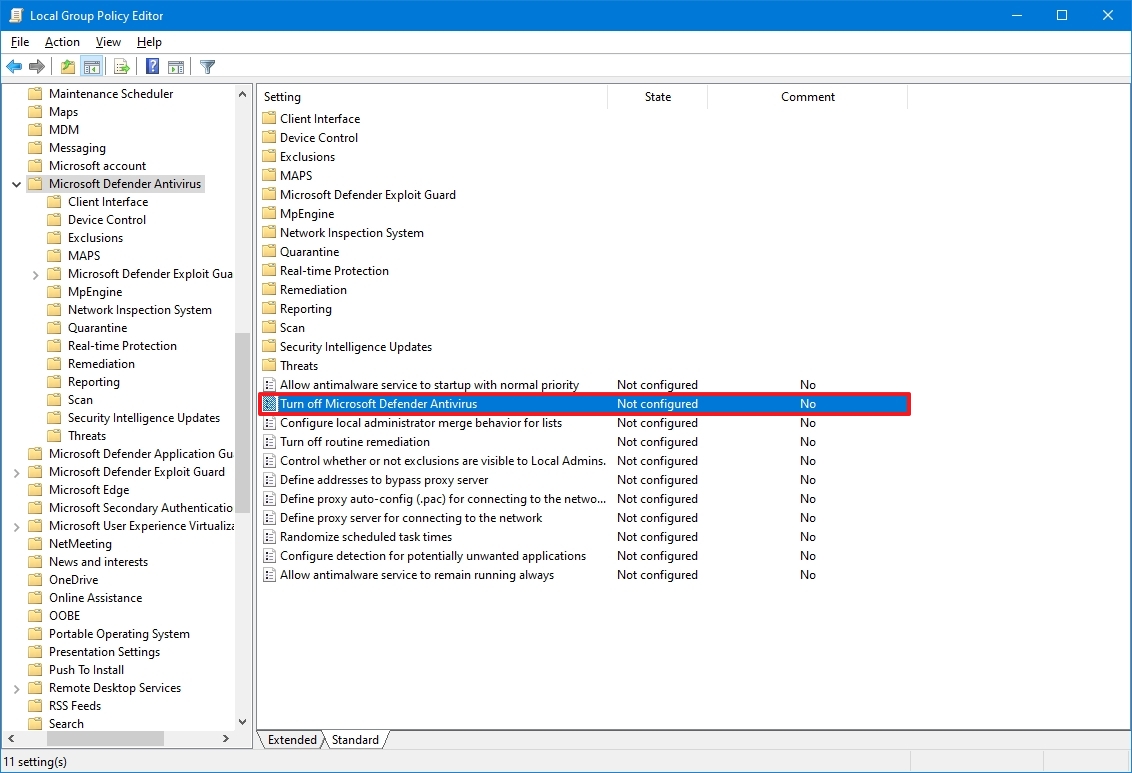
- Select the Enabled option to disable Microsoft Defender Antivirus permanently.
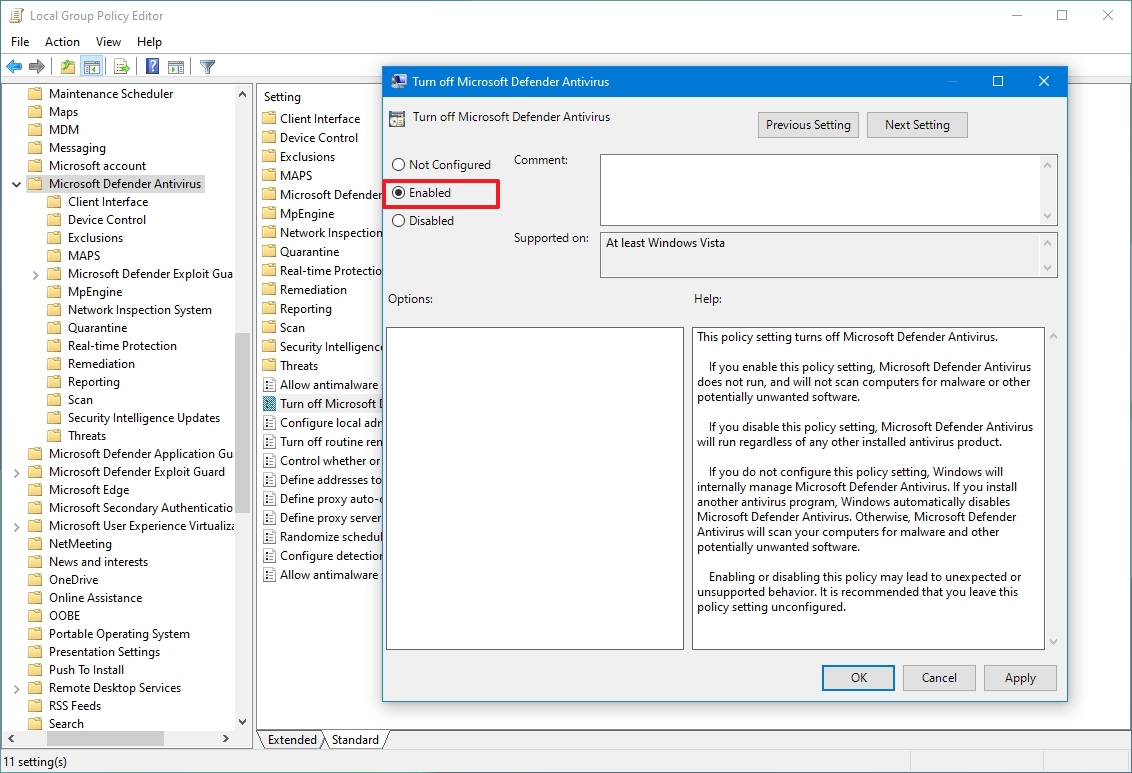
- Click the Apply button.
- Click the OK button.
- Restart your computer.
Once you complete the steps, the Windows antivirus will be disabled permanently, but the "shield" icon will remain in the Taskbar because the icon is part of the Windows Security app, not the antivirus program.
You can always undo the changes using the same instructions, but in step 5, select the Not Configured option. In addition to enabling the antivirus, it is also a good idea to turn on the "Tamper Protection" feature again using the same steps outlined above, but in step 5, make sure to enable the toggle switch.
How to disable Microsoft Defender Antivirus using third-party solution
If you plan to disable the antivirus to install another anti-malware software, this process isn't necessary since installing another security software will disable Microsoft Defender Antivirus automatically.
To disable Microsoft Defender Antivirus using third-party protection, use these steps:
- Open the antivirus download page.
- Quick note: We will be installing Bitdefender, but the instructions will be similar to any other software. Of course, it is always recommended to check the software documentation for more specific details.
- Click the Download button to save the installer on the device.
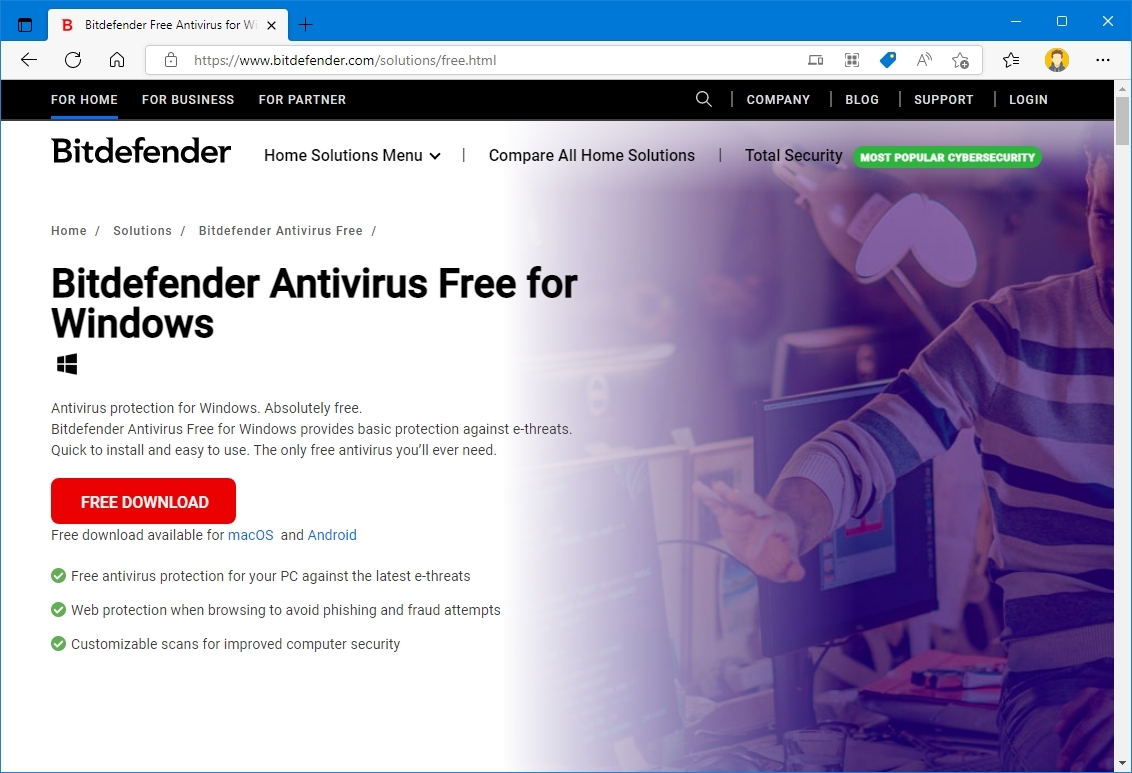
- Double-click the file to launch the installation.
- Check the option to agree to the licensing terms (if applicable).
- Click the Install button.
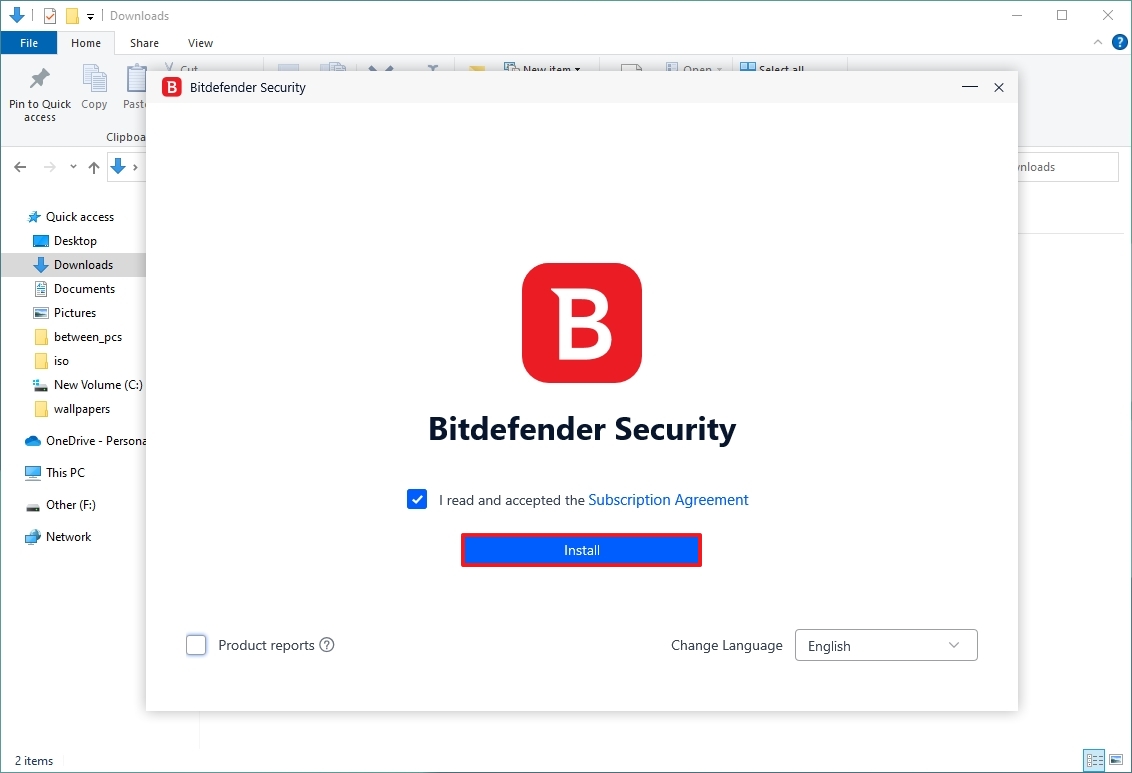
After you complete the steps, Windows 10 will detect the installation and automatically disable Microsoft Defender Antivirus on the computer.
Check current security provider
To check the default antivirus has been disabled, use these steps:
- Open Start.
- Search for Windows Security and click the top result to open the app.
- Click on Settings at the bottom of the page.
- Under the "Security providers" section, click the Manage providers option.
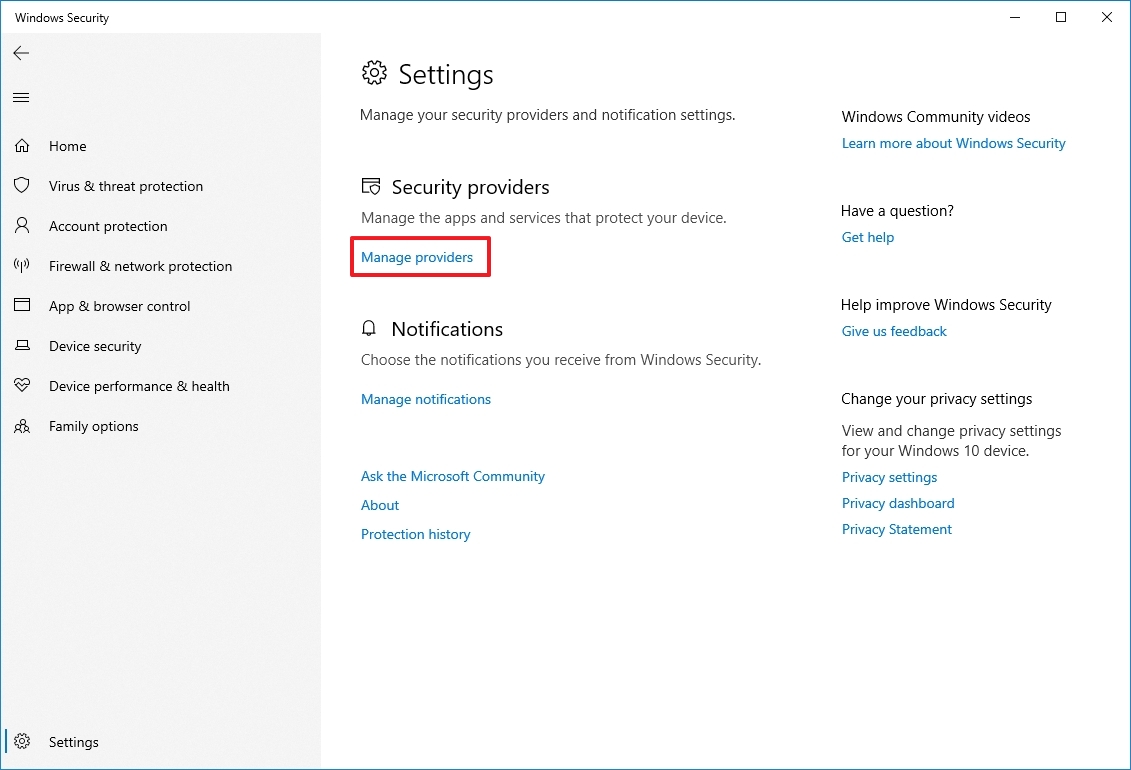
- Under the "Antivirus" section, Microsoft Defender Antivirus should appear permanently disabled.
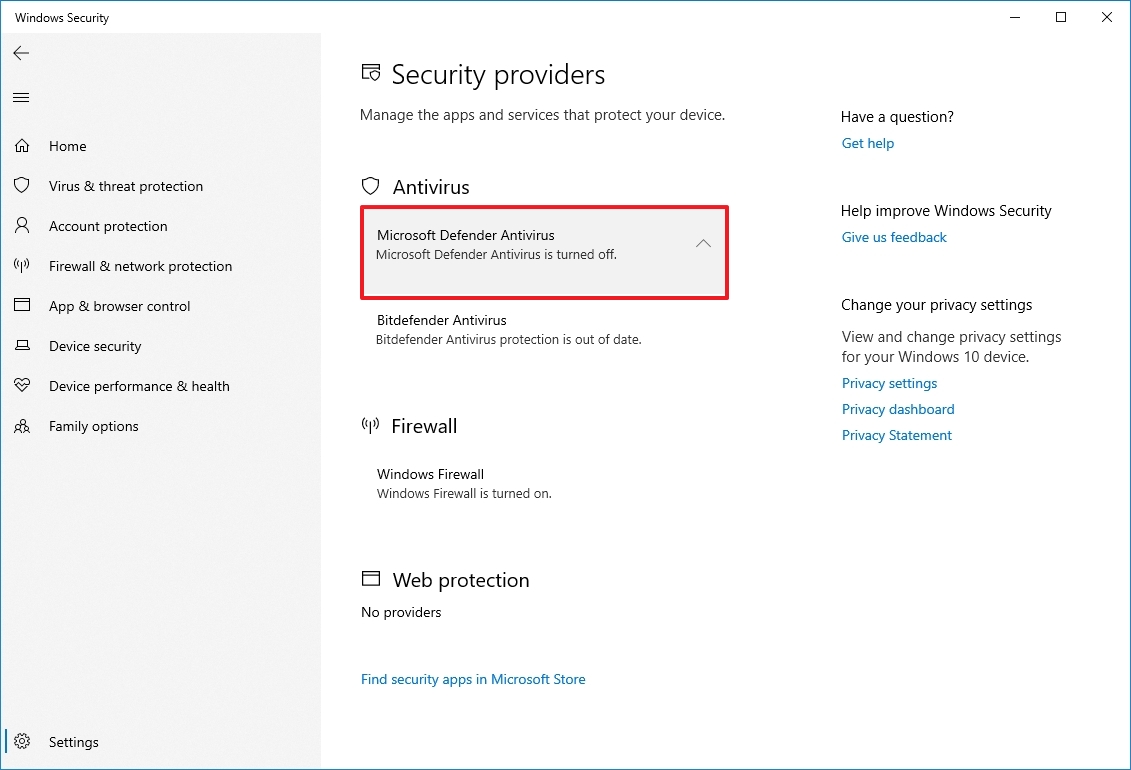
Although multiple methods exist to disable the default antivirus on Windows 10, we do not recommend using a computer without anti-malware protection. However, some situations might still be where disabling the security feature could make sense.
If you are in the market for an alternative to Microsoft Defender Antivirus, you should consider these options:
More resources
For more helpful articles, coverage, and answers to common questions about Windows 10 and Windows 11, visit the following resources:
Mauro Huculak has been a Windows How-To Expert contributor for WindowsCentral.com for nearly a decade and has over 15 years of experience writing comprehensive guides. He also has an IT background and has achieved different professional certifications from Microsoft, Cisco, VMware, and CompTIA. He has been recognized as a Microsoft MVP for many years.

